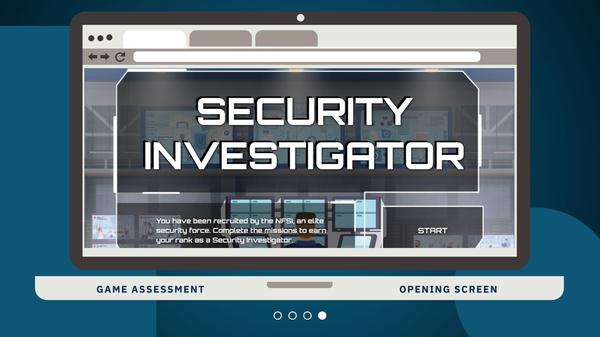


This LMS course shell was created as part of the EME5456 Online Pedagogy and Design project. I took the lead in crafting the objectives, syllabus, instructional materials, assessments, and graphics. The course features three completed modules along with nine placeholders for future content. This initiative acted as a prototype that I presented to the Security Training Leadership, aimed at establishing a comprehensive onboarding program for new hires in the Security Division. In this project, I played the roles of project manager, designer, and developer, overseeing the full development and implementation in 2025.
Feel free to browse through the image gallery for a quick glimpse of the LMS course shell. Click on each image to view it in detail. You can also explore the project documents submitted for this course project.
This Onboarding course was developed as a training program for all newly hired employees in the Security Division at NFCU. The vision for this project was designed to complement the Organizational three-day onboarding session that all new hires are required to complete according to company policy. The training is structured into various modules that act as a checklist or syllabus. Each module provides an overview of the entire division and demonstrates how the different departments connect to create a cohesive unit. Participants will engage in a range of activities, including an LMS/Rise course, a four-hour instructor-led training, meet-and-greet sessions, and job shadowing modules for each of the Fraud Operations workflows. A participant guide will be available to assist them in taking notes and navigating through specific tasks. The final module will include a DBLA, encouraging new hires to summarize their insights about the division and their role within the organization. Additionally, a reflection prompt will invite learners to share their thoughts on the course, especially regarding their job shadowing experiences.
Target Audience
All new hire employees into the Security Division at Navy Federal Credit Union.
Content and Design
This project required the following elements for the design of an online course:
The project's parameters and the capabilities of Canvas LMS significantly influenced both the content and design. The development and design of the LMS course shell was an iterative process using the ADDIE and SAM models. In addition to this, the QM Quality Assurance System for Continuing & Professional Ed was used to help inform the LMS setup, navigational features, as well as the instructions provided to learners for assignments and activities required for course completion.
Due to the vast range of technological skills of new hires and the restricted nature of the third-party resources implemented by the organization the media content was limited. Media choices consisted of YouTube videos, Third-party websites, quizzes, articulate rise courses, worksheets, and the integration of a shared OneNote notebook for notes and resources. Zoom was used to host the synchronous learning session. Throughout the course, I prioritized the integration of various collaborative activities such as the Padlet introduction activity completed in the Getting Started module, group activities during synchronous sessions, as well as the asynchronous discussion activity. These activities provide learners with autonomy and flexibility, allowing them to work at their own pace while still fostering a sense of community and teamwork.
Tools Used
Canvas LMS, Padlet, Articulate Rie 360, Canva, YouTube, Google Cloud
Communication Skills:
Convey ideas clearly across written, visual, and spoken formats.
Design visuals aligned with message design principles.
Facilitate engaging presentations, apply questioning techniques, and practice active listening.
Use appropriate tools to communicate with diverse stakeholders.
Analysis Skills
Determine subordinate and prerequisite knowledge and skills.
Design Skills
Apply learning theory and systems thinking to design practice.
Design interventions to address learning and performance.
Design a curriculum, program, or learning solution with appropriate instructional strategies and activities.
Design assessments to measure learning and performance.
Identify the scope and sequence for instructional solutions.
Technology and Media Skills
Select and use appropriate technology and media for specific outcomes.
Develop instructional materials using a variety of media (e.g., print, audio-visual, multimedia).
Develop and use web-based instruction, e-learning, social media, and content management tools.
Use technology correctly for professional communication purposes.
Personal and Interpersonal Skills
Collaborate effectively with others.
Give and receive constructive feedback.
Build positive relationships with team members, clients, and other stakeholders
Recognize and accommodate individual and cultural differences.
Stay current about advances in instructional systems and learning technology.